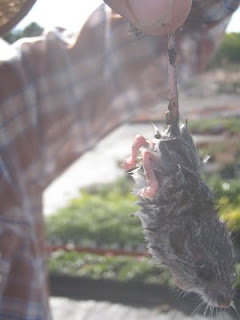This post is about low things or great autumn things, and things that are both.
 The fetching Townsendia incana, in the Colorado National Monument, in spring. A low plant needing more attention from dry gardeners. Usually found in a few places here-and-there in the Monument, it is having a field day this year and is growing everywhere, probably to blooming its head off in a favourable year for it to resign to a quiet, invisible presence in the wild seed banks.
The fetching Townsendia incana, in the Colorado National Monument, in spring. A low plant needing more attention from dry gardeners. Usually found in a few places here-and-there in the Monument, it is having a field day this year and is growing everywhere, probably to blooming its head off in a favourable year for it to resign to a quiet, invisible presence in the wild seed banks. I really have got a hobby horse about this native roughneck. Distichlis stricta (aka Distichlis spicata ssp. stricta) It is an agressive underground-running sod former who should be used in places just like this spot above- unirrigated and divided from other cultivated beds. In the right place, it could be one of the most useful groundcovers. Pity it is not available. Note how it is crowding off the Weeds to the bottom right, (perhaps Lamb's Quarter and Puncturevine/Goathead: Atriplex hortensis and Tribulus terrestris respectively). It appears to also be left unmowed. I personally like the blonde look it takes on upon cold weather.
I really have got a hobby horse about this native roughneck. Distichlis stricta (aka Distichlis spicata ssp. stricta) It is an agressive underground-running sod former who should be used in places just like this spot above- unirrigated and divided from other cultivated beds. In the right place, it could be one of the most useful groundcovers. Pity it is not available. Note how it is crowding off the Weeds to the bottom right, (perhaps Lamb's Quarter and Puncturevine/Goathead: Atriplex hortensis and Tribulus terrestris respectively). It appears to also be left unmowed. I personally like the blonde look it takes on upon cold weather. Another sod-former often growing alongside the above Inland Saltgrass and acting much the same, this is scratchgrass, or Muhlenbergia asperifolia. The left side has had a mower take out that pink-ground-cloud-of-glory. Fruita, Colorado.
Another sod-former often growing alongside the above Inland Saltgrass and acting much the same, this is scratchgrass, or Muhlenbergia asperifolia. The left side has had a mower take out that pink-ground-cloud-of-glory. Fruita, Colorado.
Some ground-dwelling fauna to spice it up. I caught this fella by cornering him with a watering wand in our growing field at the nursery. It was nice to personally meet the enterprising fellow who will excavate and destroy the roots of a speckling of plants in their containers. I thought he might be our usual suspect, a vole, but he looks more mousy.
 Little Bluestem at its most colourful. I invite the reader to count and note how many entirely different and un-subtle colours there are. The plant will all go to a pinky/rusty/ruddy colour in a few weeks, which is how it will remain all winter until new, blue or purple stems grow in late spring.
Little Bluestem at its most colourful. I invite the reader to count and note how many entirely different and un-subtle colours there are. The plant will all go to a pinky/rusty/ruddy colour in a few weeks, which is how it will remain all winter until new, blue or purple stems grow in late spring. The same colours in a sunset. Nature has agreed on an autumn palette, I see.
The same colours in a sunset. Nature has agreed on an autumn palette, I see.